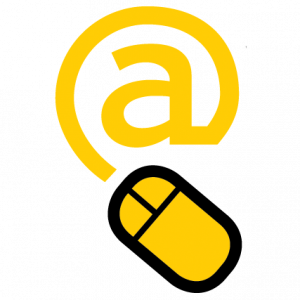Dear all,
Maurizio Gabbrielli (one of the organizers of the Computer Science Spring School in Bertinoro) informed me that the 2017 edition of the BISS school will take place from March 6 to March 10.
The invited speakers are listed in ps.
Please consider to attend the school among your possible choices.
Bertinoro is a nice play to stay and the school has always interesting tutorials.
Furthermore, it is an attempt to coordinate activities of Italian PhD programs in computer science. The webpage of the 2016 edition is available here:http://www.cs.unibo.it/projects/biss2016/index.html
The new webpage will be available soon.
Giorgio Delzanno
ps. speakers
Fabrizio Grandoni: TITLE: Approximation Algorithms ABSTRACT: Most optimization problems that we need to solve in practice turn out to be NP-hard. Therefore, there is little hope to find efficient (i.e. worst-case polynomial-time) algorithms to solve them. The goal of approximation algorithms is to compute efficiently a solution to an NP-hard optimization problem whose cost is guaranteed to be within a given factor (approximation ratio) from the optimal cost. In these lectures we will describe some of the most relevant results and techniques in the area of approximation algorithms. We will consider a few fundamental problems, which appear in several real-world applications, and illustrate some of the most common and powerful techniques in the design and analysis of approximation algorithms. We will also discuss the limits of approximation algorithms, by presenting some approximation lower bounds and inapproximability results. EXAM: homework ================== Lecturer: Luigi Portinale Course Title: Probabilistic Graphical Models in Intelligent Systems Abstract: The course aims at introducing notions and algorithms for Probabilistic Graphical Models (PGM) in Artificial Intelligence (AI). PGMs are the the main AI formalism for dealing with uncertain knowledge and reasoning; they are grounded on both probability calculus and graph theory and represent an effective tool for the construction of intelligent decision support systems. After a short review of probability calculus and of the interpretation of probability, we will discuss different types of PGMs, namely directed models like Bayesian Belief Networks and undirected models like Random Markov Fields. Both representational and algorithmic issues will be discussed, as well as aspects concerning extensions to dynamic models, sensitivity analysis and learning. Concepts from Bayesian decision theory will be introduced, in order to give a better understanding of the formal framework underlying decision networks and their different versions (classical Influence Diagrams vs LIMID models). Examples of software tools available for the management of PGMs will be presented, together with applications in the areas of dependability of systems , FDIR (fault detection identification and recovery) and planning under uncertainty. Course Outline. • Probability theory: main concepts and interpretation (frequentist vs subjective) • Introduction to Probabilistic Graphical Models o directed vs undirected models: Bayesian Networks and Markov Random Fields o graph theoretic dependency o modeling Issues, o exact inference o approximate inference o learning approaches (parameter and structure learning) o dynamic models (DBN) • Decision Theory o rationality axioms o notions of lottery and expected utility • Decision Networks o modeling issues, o inference techniques o Limited Memory Influence Diagrams (LIMID) ======================== Alexandra Silva: Kleene algebra with tests and applications to network programming We will introduce Kleene algebra with tests, a language based on regular expressions that can be used to reason about simple imperative programs. We will then present NetKAT, a language for programming networks based on Kleene Algebra with Tests, and discuss several examples of network properties that can be specified and proved with NetKAT. We will review operational, denotational, and axiomatic semantics in the context of NetKAT and present an equivalence procedure based on coalgebraic techniques. Time permitting, we will also discuss a probabilistic extension of the language and its semantics.
